What is Multi-Accounting?
Multi-accounting is the practice of using multiple accounts to participate in various activities such as testnets, social tasks, quests, nodes, and retro-hunting
It works similarly to leverage in futures trading — by increasing the number of accounts, you effectively scale up your rewards just like increasing the size of a trade
Of course, this also raises the risks, but higher risks often lead to higher rewards, it’s that simple
Pros and Cons of Multi-Accounting
Of course, no strategy is without its downsides, so it’s important to discuss both the advantages and risks
Key Advantages of Multi-Accounting
- Increased Chances of Rewards Having multiple accounts allows you to complete a wider range of quests, increasing the likelihood of landing on the one that acts as a multiplier for a potential airdrop
- Risk Diversification Many of my followers ended up on Sybil lists in projects like LayerZero or Linea, losing their rewards entirely Multi-accounting helps mitigate these risks, around 60% of my accounts avoided these lists and still received rewards, making a -40% loss far less damaging than a full -100%
- Maximizing Profits Airdrop distribution is often not linear. Someone who spends $1,000 on a single account might receive the same rewards as someone who only spent $100 A more efficient strategy is to diversify account tiers - having one account with a $1,000 investment and ten others with $100 each. This approach increases potential returns while reducing overall risk
Disadvantages of Multi-Accounting
- Higher Chance of Mistakes When Managing Multiple Accounts Handling a large number of accounts requires significant time and focus, especially when monitoring new quests across different projects
Many users make simple yet costly mistakes:
- Forgetting to save seed phrases for wallets
- Confusing accounts and sending funds to the wrong address
- Linking wallets in a way that makes them easily identifiable as Sybil accounts
- Security Risks The more accounts you have, the greater your exposure to phishing and hacking risks.
It's easy to securely store a single seed phrase on paper, but when you’re dealing with 1,000+ private keys, only crypto encryption can help (though it still doesn’t offer 100% protection)
Losing private keys or seed phrases means losing control over the wallets and all assets in them, there’s no way to recover them
- Higher Fees and Spending Per Account With only a few wallets, you can optimize your strategy for maximum efficiency. But when scaling up to 500+ wallets, things change
At that point, it becomes a trade-off between speed and quality, and prioritizing speed with decent execution often yields better results than perfection
Quality doesn’t always guarantee success. Quick execution usually outperforms precision, especially in airdrop farming
However, I personally lean towards managing 100–200 wallets with higher quality, ultimately, this is a strategic choice each person must make
Preparation for Multi-Accounting
At first glance, multi-accounting may seem simple, especially if you’ve already participated in various project activities
However, the key difference is that all responsibility falls on you, particularly in selecting the right projects and staying focused
This will help you avoid common mistakes, reduce risks, optimize your workflow, and make better use of your time
Assessing Your Readiness: Skills, Budget, and Goals
1. What Skills Do You Have?
Before starting, it’s essential to honestly evaluate your skills, especially in managing wallets, using exchanges, and following security best practices
Here’s what you should be comfortable with:
- Creating and managing multiple wallets efficiently (e.g., using CoinTool)
- Understanding basic security principles to protect assets
- Analyzing transaction fees and optimizing spending
- Experience working with different blockchains, DeFi platforms, and on-chain activities
2. How much Time and Money Can You Invest?
Managing multiple accounts requires both time and financial resources
Be prepared for:
- Constant monitoring of accounts and completing necessary tasks
- Covering expenses for transaction fees, on-chain activities, and potential risks
3. What are your goals?
Define your objectives clearly to align your multi-accounting strategy
Are you looking to:
- Participate in retrodrops and airdrops for potential rewards
- Maximize profits through farming or trading (e.g., leveraging DEX perps)
- Test new dApps in hopes of receiving future rewards
Setting up your workspace and security tips
Once you’ve assessed your readiness, the next step is to set up a structured workflow and generate multiple wallets efficiently
This foundation is key to managing your accounts effectively and avoiding unnecessary mistakes:
Anti-Detect Browsers for Account Management
Using an anti-detect browser makes it easier to manage multiple accounts without linking them
Some of the best options include AdsPower, Dolphin, OctoBrowser, and others
These tools allow you to create unique browser profiles and switch between them seamlessly
There are also alternative methods for running multiple accounts, which I’ll cover separately
Wallet Creation
The fastest and most efficient way to generate wallets is directly within browser profiles. Here’s what you need to do:
Install a suitable wallet extension based on the blockchain you’re working with:
- EVM networks: MetaMask, Rabby, OKX Wallet
- Solana: Phantom, Solflare, Backpack
Manually create a new wallet in each profile
Securely store your seed phrases and private keys, this is non-negotiable.
Organizing Files and Documents
Keeping track of multiple accounts requires structured data management
Store login details, passwords, seed phrases, and other critical information in an encrypted format
Use password managers or encrypted storage solutions to prevent data leaks
Exchanges
You'll need reliable exchanges for buying necessary tokens and withdrawing funds
Binance, OKX, and Bitget are good choices due to their low fees and strong security
To reduce risks:
- Distribute activity across multiple exchanges
- Check each platform’s multi-accounting policies, some have strict limits on sub-accounts
Social Media Accounts
For social-based tasks (e.g., Galxe, Intract quests), you’ll need accounts on:
- Twitter (for reposts and engagement)
- Discord (for joining servers)
- Telegram (for community channels)
Each account also requires an email for registration and verification. These accounts can be bought on specialized marketplaces since social profiles in multi-accounting are disposable, many get banned over time
List of this marketplaces I've stayed in my Telegram channel (link in bio)
To extend their lifespan:
- Buy higher-quality accounts instead of cheap ones
- Use proxies (optimal ratio is 1 proxy per profile, but for cost efficiency, you can go 1:3 or 1:5)
Proxies
Proxies help mask your internet connection and make it look like your accounts are coming from different locations, reducing the risk of detection.
For anti-detect browsers, the best option is static IPv4 proxies, with prices ranging from $1.1 to $2 per proxy. Using proxies properly is crucial to avoiding sybil list
You can find the list of proxy services I use in my Telegram channel (link in bio)
Step-by-step guide: How to use Anti-detect browser: create profiles, etc.
After the recent hacks of the most popular anti-detect browsers, it’s become a bit scary to use them
Even AdsPower, which I always used, was hacked, and they still haven’t refunded users
That’s why I’m now diversifying my accounts across two methods: the Anti-detect browser AdsPower and a properly configured Google Chrome
Disclaimer: I’m not encouraging anyone to use AdsPower. If you decide to use it, you should understand the risk of another potential hack. I’m not their partner, it’s just a app I personally use
Why do I even use an anti-detect browser instead of relying entirely on Chrome?
- Quick profile setup: Unlike Chrome, I can create 1000+ profiles with one click and immediately start using them with certain RPA scripts
- Up-to-date settings: Unlike Chrome, it provides current user agents, convenient proxy updates, and smooth proxy management
- Additional features: Syncing, RPA scripts, and easy account delegation to a team
Guide to working with AdsPower
1. How to create profile or batch create 1000+ in one click?
Click on the “+” icon in the top left corner to go to the Bulk Create page and select “Quick Create”
Next, in the “Browser” section, choose the operating system of the device you are using AdsPower on Just below, in “Way to Create”, specify the number of profiles you need to create In the “User Agent” section, leave it as “Random” Then, in the “Proxy” section, enter the proxy if you're using a mobile one or if you plan to manually change it for each profile. (You can also create profiles using a table in this section via Mass Import, where you can assign a unique proxy to each profile with Ctrl + C, Ctrl + V)
I usually leave everything else as default and simply click OK
2. How to add any extensions to each profile in one click?
Click on the “Extensions” tab in the top menu
Next, click on “Upload Extension” and paste the Chrome Web Store link
Click OK, and the extension will be automatically installed across all selected profiles
3. How to change proxy or fingerprint in one click (when profile already created)
Go to “Profiles” and select the profile you want to edit
Click on the “Edit” button
- To change the proxy, navigate to the “Proxy” section and enter a new proxy
- To change the fingerprint, go to the “Fingerprint” section and click “Generate New”
Click OK, and the changes will be applied instantly
4. How to delegate your work to your team? (and synchronize all data)
Go to “Members” in the left menu
Click on "Create a group", and assign permissions to your team
After that, click on “Add Team Member”, enter their email, and select the group you want to share
Click OK, and your team members will now have synchronized access to the assigned profiles
Guide to working with Google Chrome
This method is ideal for solo users who don't need API automation or synchronization. It’s also a great free option (excluding proxy costs)
1. How to create unique profile?
Open Google Chrome and click on the profile icon in the top-right corner.
In the menu, select “Add Profile”
If you have a Google account, you can log in to sync your data, or click “Continue without an account”
For better organization, name your profiles numerically, e.g., 1, 2, 3, 4 or f1, f2, f3, f4
Repeat the process to create as many unique profiles as needed
2. Creating file to open unique profiles
Right-click on the desktop and select “New” → “Shortcut”
In the location field, enter:
📍 C:\Program Files\Google\Chrome\Application, then click Browse
If Chrome is installed in a different folder, right-click on the Chrome shortcut, select Properties, and copy the file location
Choose “chrome_proxy” and click OK
Click Next, name the shortcut (e.g., “Chrome Profiles”), and click Finish
Now, opening this shortcut will provide easy access to all created profiles
3. How to turn on proxy on Chrome?
Go to the Chrome Web Store and install one of the following proxy extensions:
🔹 Proxy SwitchyOmega
🔹 Proxy Switcher
(But first, check the reviews, some of them might not be working by the time you read this, always do your own research)
Open the extension and go to the “Manual” settings
Check the boxes for:
✔ “Use this proxy for all protocols”
✔ “Authorization”
Enter your proxy details and click the gray checkmark to save settings
For best results, restart the profile and switch proxies by clicking the purple server icon
To return to your home IP, click the green server icon
4. How to change user agent on Chrome?
To hide browser fingerprints, install a User-Agent switcher from the Chrome Web Store:
🔹 Random User-Agent
🔹 User-Agent Switcher
Open the extension settings and:
✔ Enable User-Agent spoofing
✔ Disable automatic changes to maintain stability
Close the settings and return to the extension
Uncheck extra icons (browsers/OS) and keep only Chrome & Windows, then click “Set New”
For convenience, enable OS auto-adjustment based on the chosen browser
Basic recommendations for farming 100+ accounts from me
- Prioritize strategy over sheer volume. First, optimize your costs to ensure profitability, as managing more accounts increases expenses (proxies, tools, etc.)
- Diversify your anti-detect browsers. There's always a risk of them being compromised, so don’t rely on just one
- Outsource if your time is valuable. If your time is worth more than $25 per hour, hire a worker to farm airdrops for you at just $5 per hour
- Always use proxies and update your fingerprint. Regularly check if they’re working properly, as one failure could compromise all your accounts
- Stay cautious with security. Use different passwords, avoid storing seed phrases on your main device, and never sign suspicious transactions
- Randomize deposit amounts and timing. Depositing fixed amounts at predictable intervals can get you flagged as a "cluster," similar to how Sybil lists are identified (same applies to withdrawals)
- Utilize sub-addresses for deposits on exchanges like OKX or Bitget to prevent linking all your accounts into a single on-chain identity, this could cost you your rewards
- Segment your accounts into different tiers. For example, one account with a $1K costs and ten accounts with $100 each, nobody knows which approach will be more profitable
- Buy aged accounts (1+ years old). They are less likely to get banned
- Vary your activity strategy. Avoid repetitive actions across accounts, keep things random to prevent being flagged as operating multiple accounts
- Create new accounts when GWEI <3. This minimizes fees in the Ethereum network, reducing unnecessary costs
Summary
Managing multiple accounts is a powerful tool for effectively farming airdrops from various projects, but it requires attention to detail and discipline
If you're confident that your airdrop farming strategy delivers a solid 10/10 performance, it only makes sense to scale up and run more than one account
The key to successful multi-account farming lies in regularly analyzing your assets and strictly following security principles
Approach this process wisely, focus on refining your strategy, minimizing farming costs, and maintaining top-tier security at all times


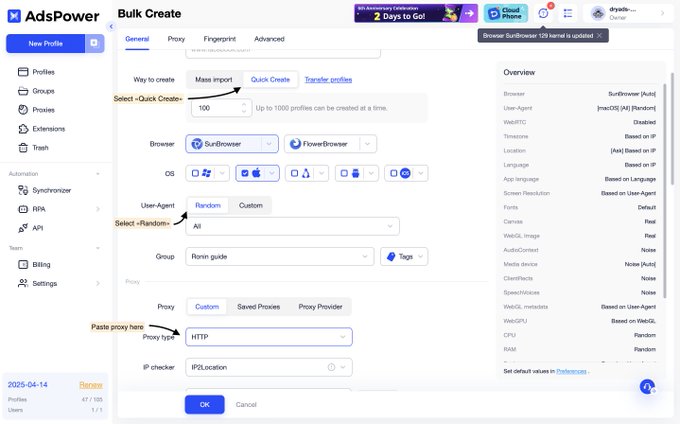
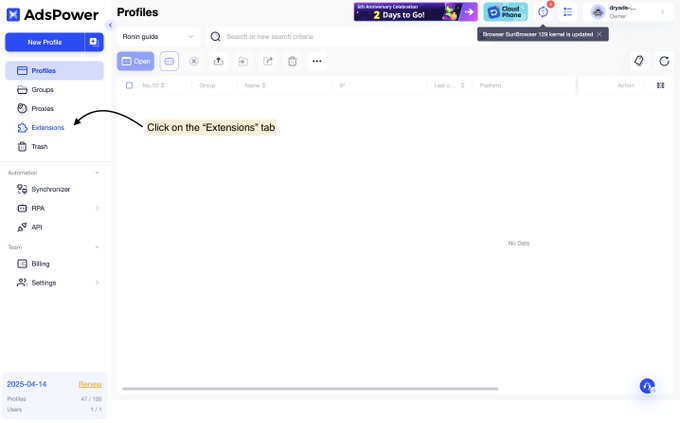
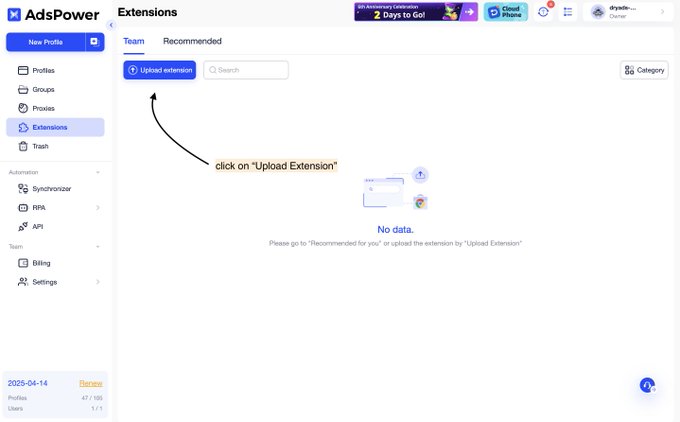
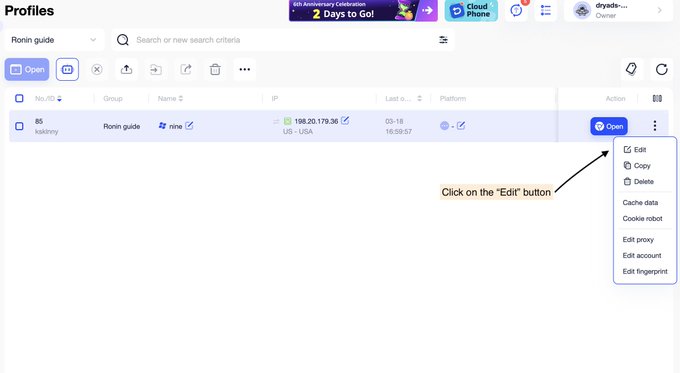
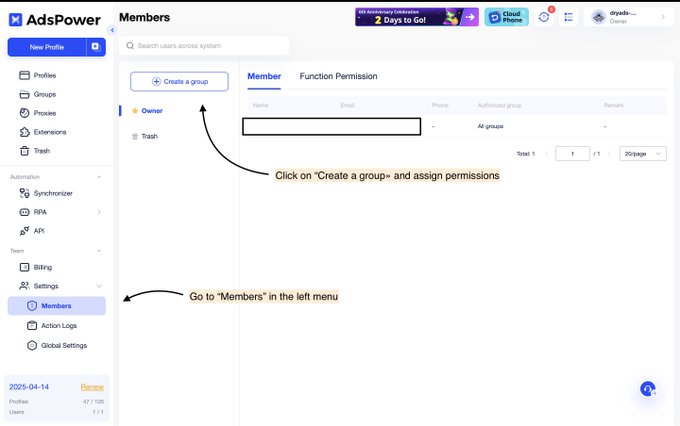


0 Comments